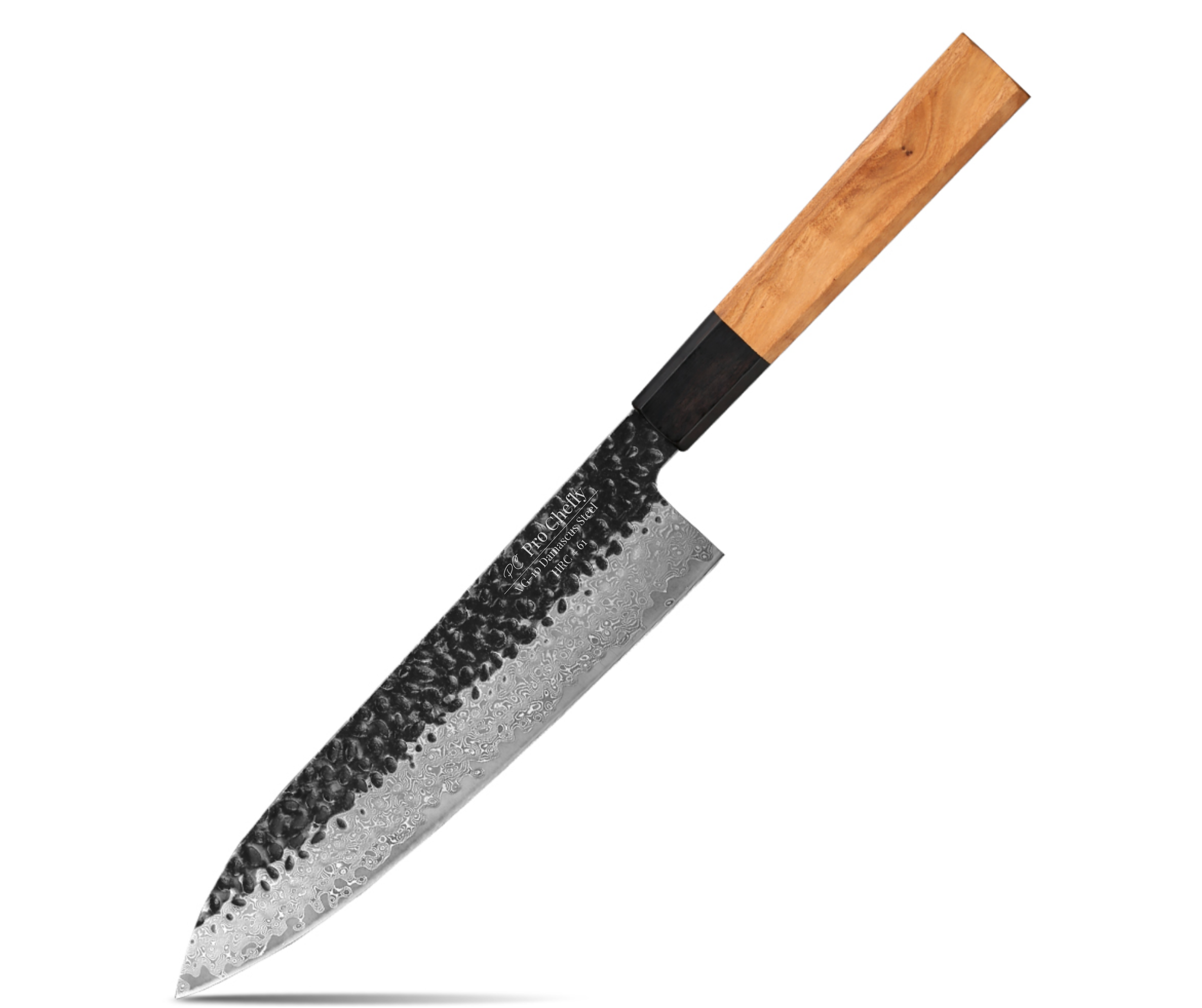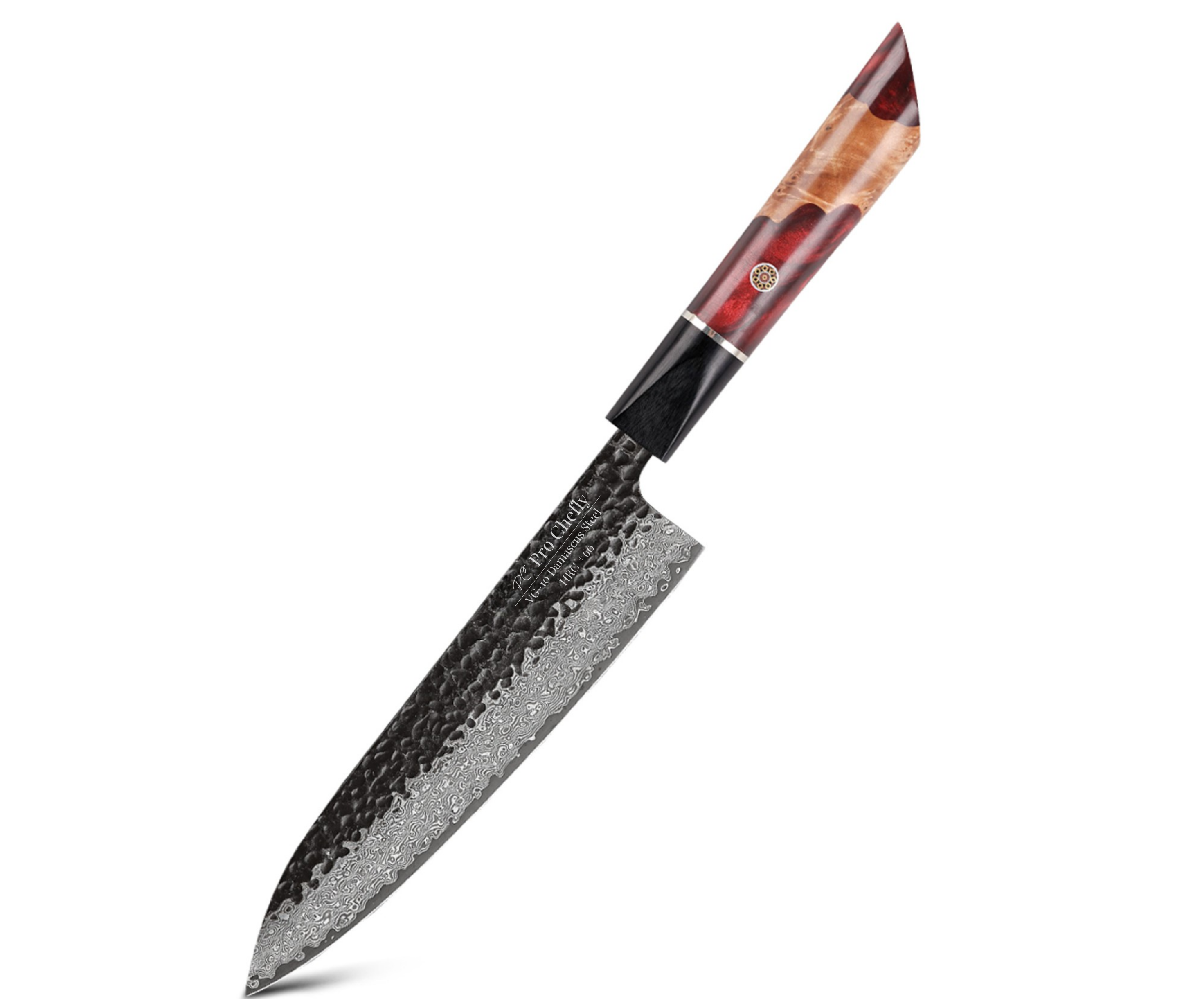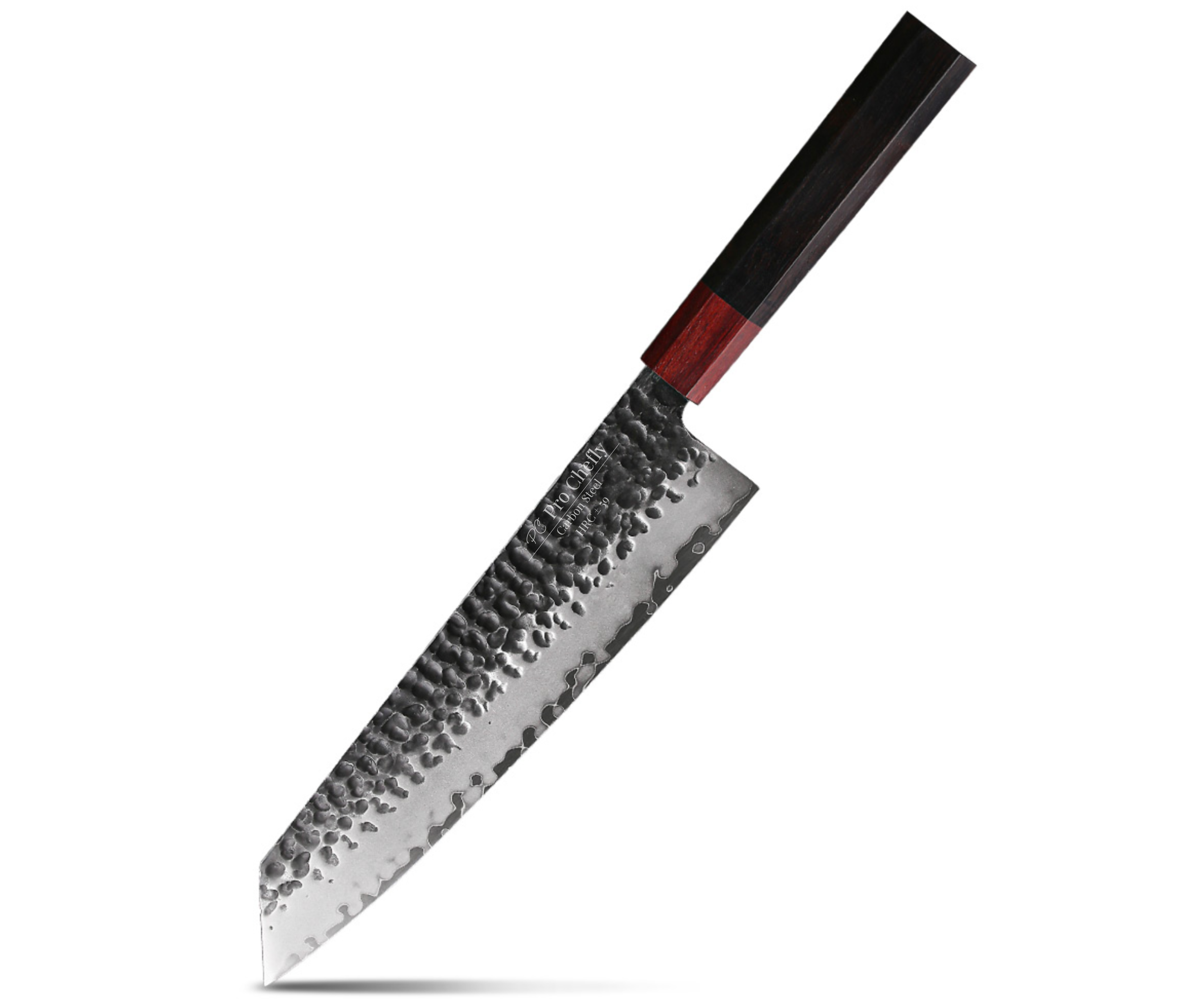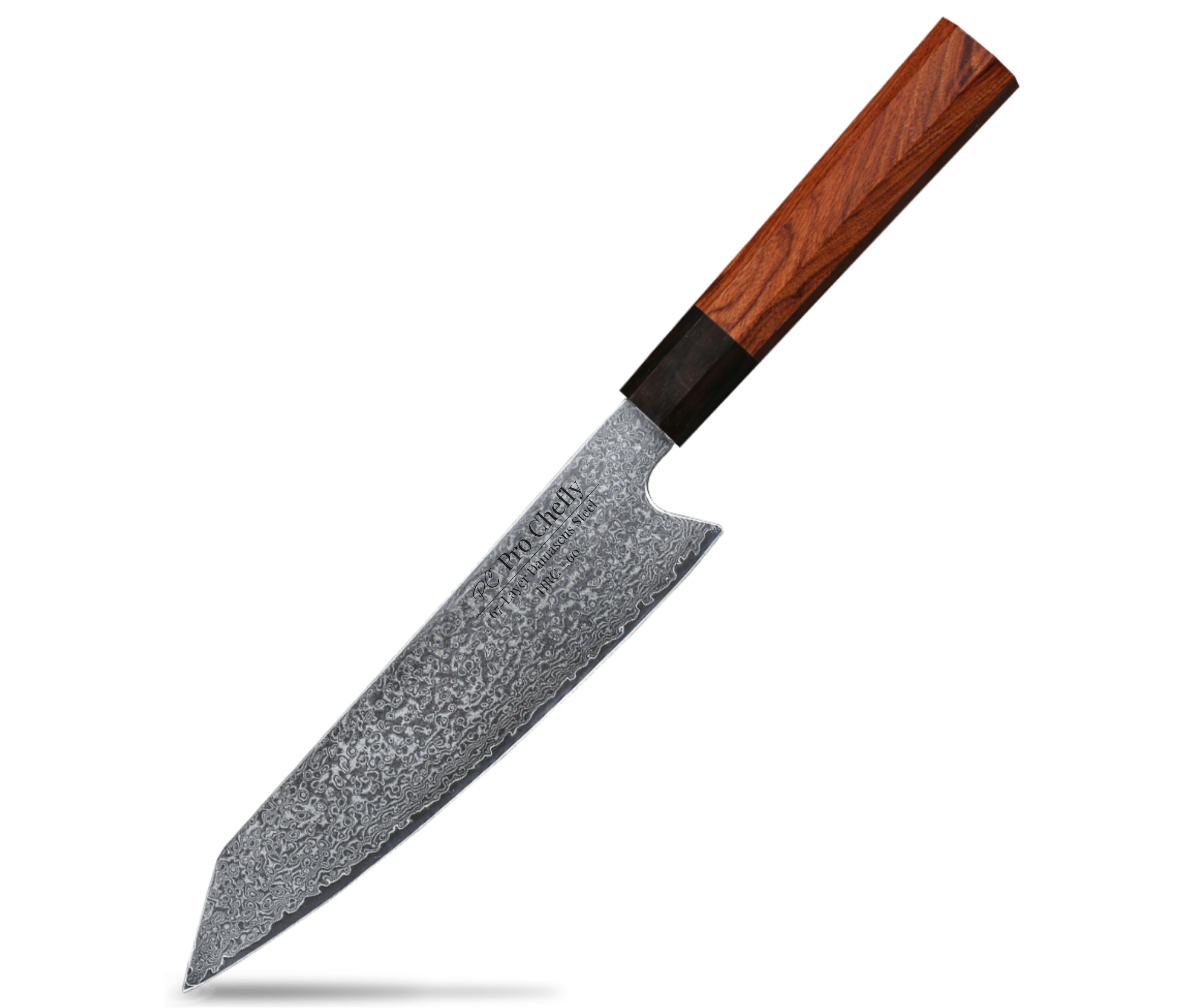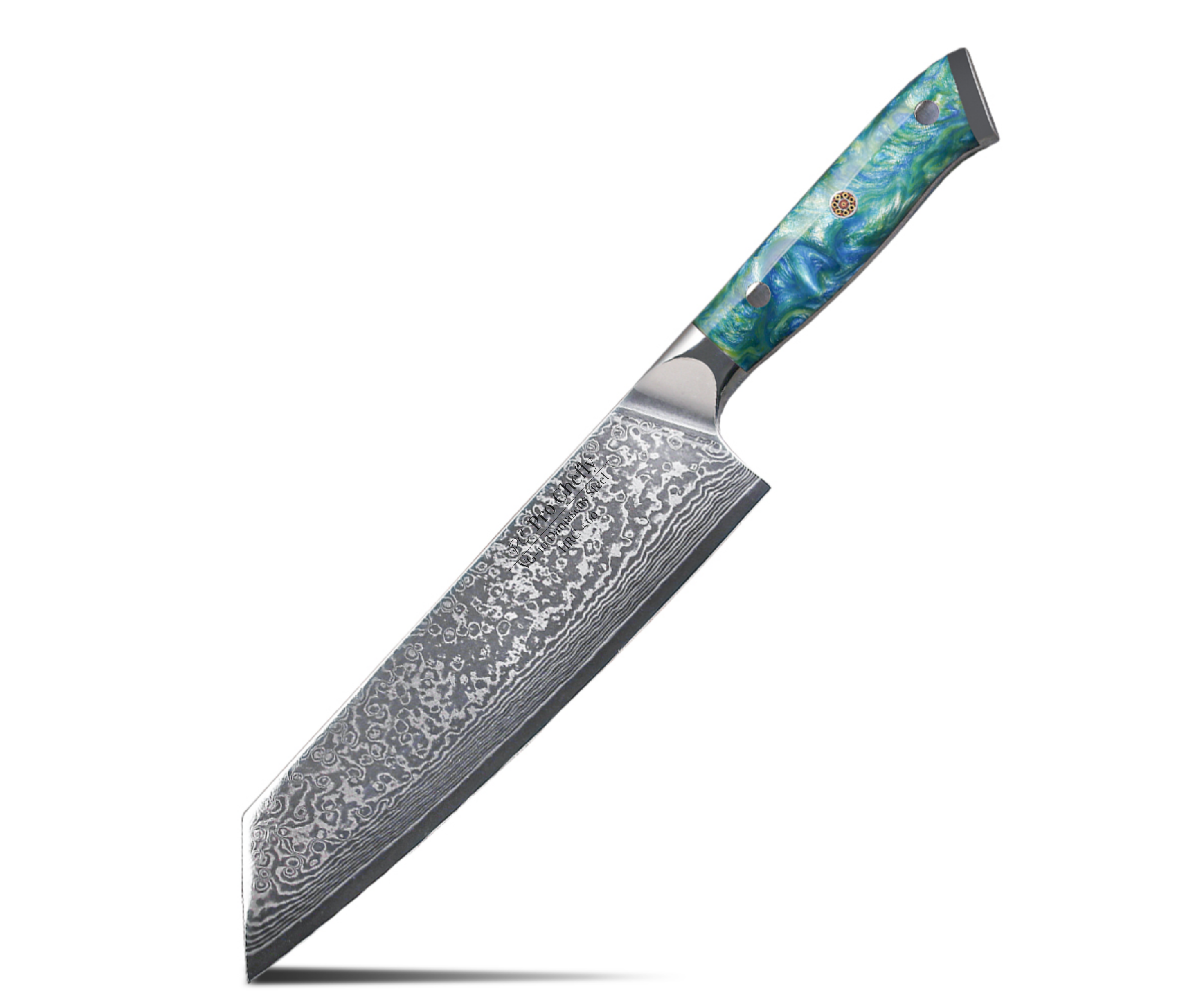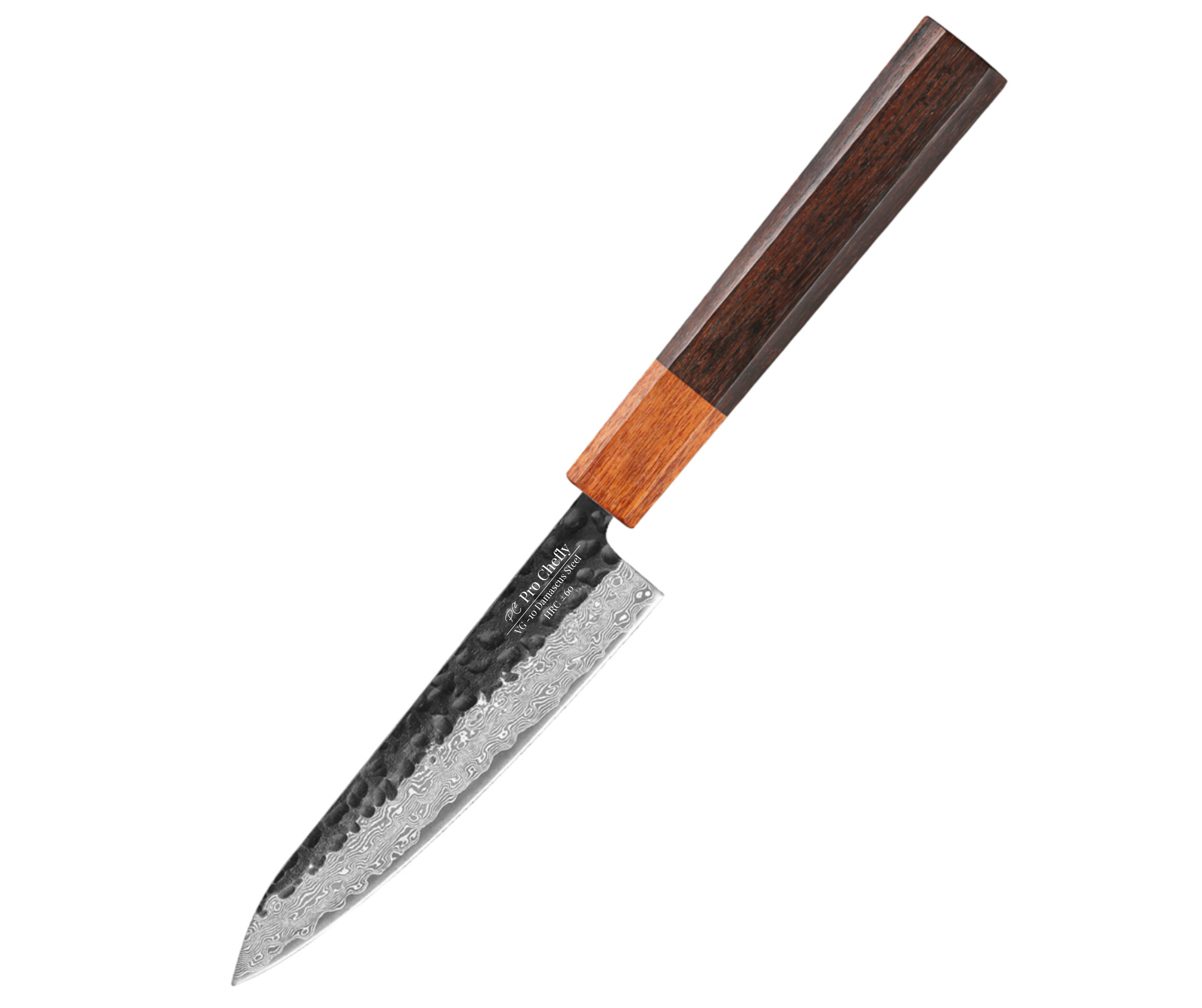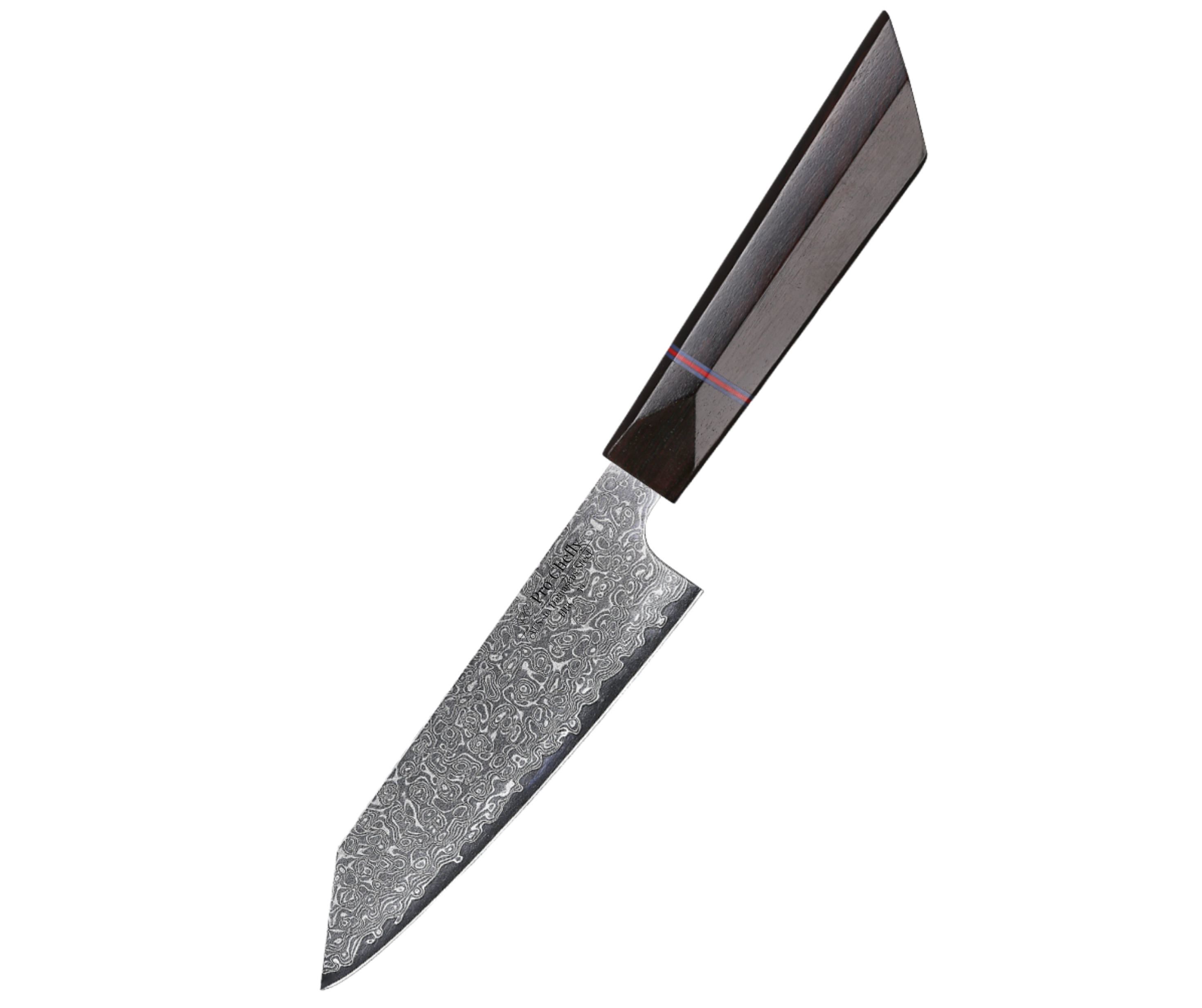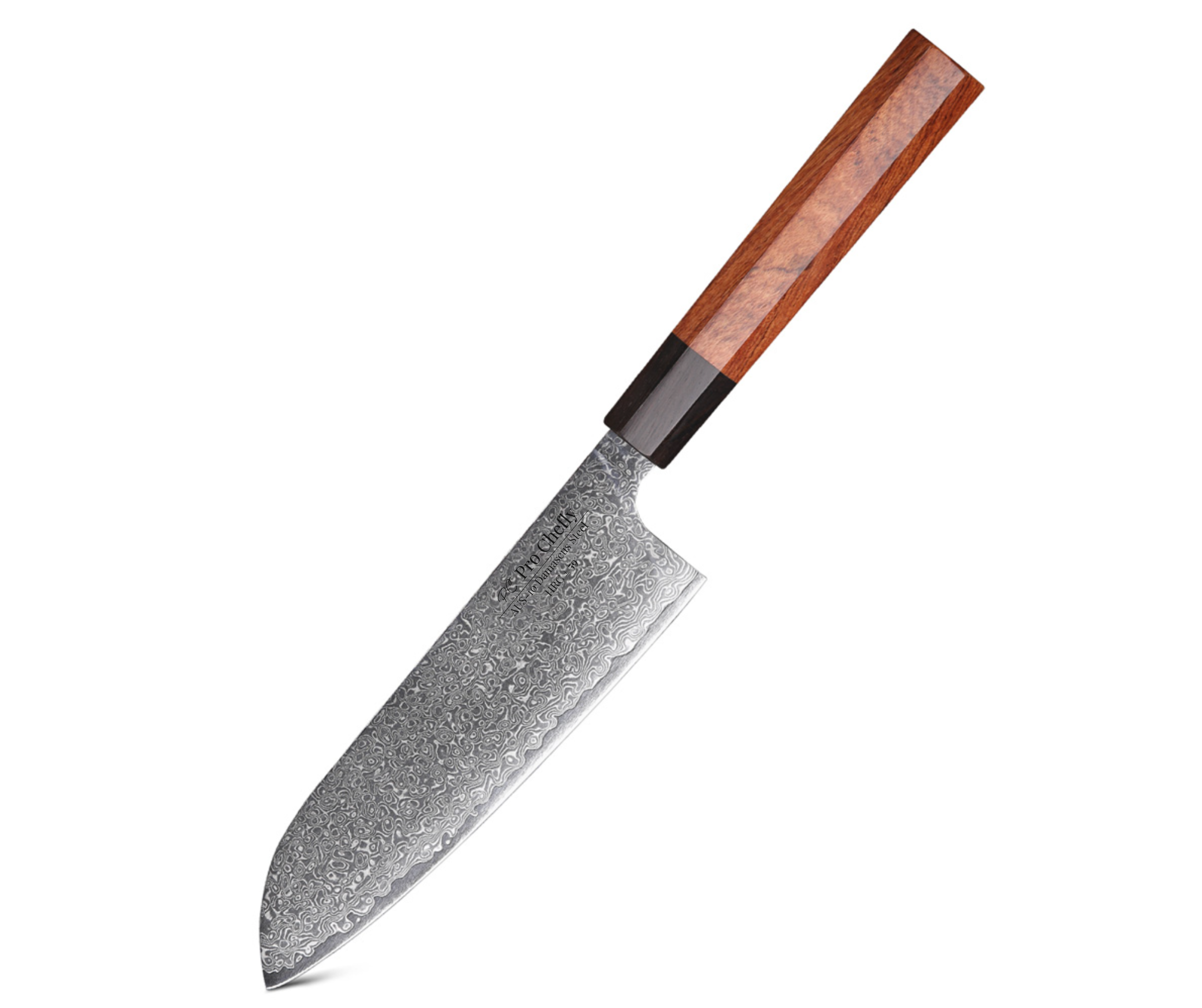Chef’s Overview
Dear Chefs, as the leaves turn gold and your kitchen fills with the scent of roasted squash, it’s time to ask a question every cook eventually faces — when should you reach for the Santoku instead of the classic Chef Knife? Both are culinary workhorses, but they were designed for different rhythms in the kitchen. So today, let’s carve through that confusion (and maybe a few pumpkins along the way) to find out which one truly shines in your fall cooking lineup.

The Story Behind the Santoku – Precision Born in Japan
The Santoku’s name translates to “three virtues” — slicing, dicing, and mincing. In Japan, it was created as an all-purpose alternative to the heavier Western Chef Knife, emphasizing finesse over force.
When I first picked up the 7" VG-10 Damascus Santoku Knife, I realized it wasn’t just lighter — it felt smarter. Its flatter edge, shorter blade, and precise control made it ideal for the kind of clean, confident chopping that autumn recipes demand.
If you’ve ever read Santoku Knives vs Western Chef Knives – Breaking Down the Differences in Fall Cooking, you’ll remember that the Santoku is built for a smooth, forward-down motion rather than the rocking chop Western chefs love. It’s not about brute strength; it’s about grace and precision.
The Battle of Function – Santoku vs Chef Knife in Fall Prep
Both the Santoku and the Chef Knife can handle almost anything, but autumn brings ingredients that reveal their differences.
The Santoku’s Strengths
When your cutting board is covered with butternut squash, apples, and sweet potatoes, the Santoku’s thin, sharp edge makes it a dream. The 7" VG-10 Damascus Santoku Knife glides through dense produce without wedging or tearing, keeping your cuts clean and uniform.
It’s also unbeatable for garlic, herbs, or onions — the fine tip lets you control every motion. Need thin slices of apples for a tart? That’s the Santoku’s stage.
The Chef Knife’s Edge
The Chef Knife, especially our 8" VG-10 Damascus Chef Knife, brings a bit more muscle. It’s perfect for carving pumpkins, breaking down larger proteins, or rough chopping bulky vegetables. If your recipe calls for power — think big-batch stews or roasts — the Chef Knife’s curved belly and heavier weight will carry you through.
We’ve talked about that balance before in Gyuto vs Chef Knife – Which Handles Meat and Vegetables Better for Fall Stews, where I explained how the Chef Knife thrives in hearty, repetitive prep. The same applies here — when the job calls for force, it’s your best friend.
Steel and Sharpness – What Makes a Santoku Special
Let’s talk materials for a second, because steel is where the Santoku really shows off. Our 7" VG-10 Damascus Santoku Knife uses the same core steel we explored in How VG-10 Steel Balances Edge Retention and Durability — meaning it holds a razor-sharp edge even after hours of chopping root vegetables or slicing through apples for cider poaching.
Meanwhile, the 8" VG-10 Damascus Chef Knife gives you the best of both worlds — slightly thicker, with the same layered Damascus artistry, perfect for handling the rougher side of fall cooking.
The Art of Choosing the Right Knife for the Right Recipe
Think of it like this, Dear Chefs — the Santoku is your scalpel; the Chef Knife is your sword.
Use a Santoku When:
-
You’re slicing vegetables, fruits, or boneless meats.
-
You want thinner, cleaner cuts for presentation.
-
You’re doing fine prep like garlic, shallots, or herbs.
-
You’re focused on control and rhythm over strength.
Use a Chef Knife When:
-
You’re cutting dense or large ingredients like squash, pumpkin, or cabbage.
-
You’re portioning proteins or trimming roasts.
-
You prefer the rocking motion of traditional Western prep.
Why Pro Chefly Chefs Keep Both on the Counter
At Pro Chefly, we never think of knives as replacements for each other — they’re partners in craft. The 7" VG-10 Damascus Santoku Knife and the 8" VG-10 Damascus Chef Knife complement each other beautifully: one offers elegance, the other power.
When I’m prepping for fall — from Butter Chicken Done Right to Butternut Squash Soup with a Chef’s Touch — I find myself switching between the two instinctively. The Santoku takes the precision tasks; the Chef Knife does the heavy lifting.
If you want to dive deeper into the craftsmanship behind these blades, check out What Makes Damascus Steel Knives Different from Stainless Steel. It’s the foundation of why both knives perform the way they do — a harmony of steel, balance, and artistry.
The Final Slice – Fall’s Perfect Pairing
Dear Chefs, autumn cooking is all about texture — the crisp bite of apples, the silk of roasted carrots, the hearty comfort of root vegetables. The Santoku and Chef Knife each play a role in honoring those textures.
So next time you’re prepping your fall feast, don’t choose one over the other. Reach for the Santoku when precision is key, and the Chef Knife when the ingredients fight back. Because the best kitchens — much like the best meals — are all about balance.
Knife Collections
Shop the latest in Pro Chefly Damascus Knives
Chef's Notes
Stay up to date with the latest kitchen stories and recipes

- October 27, 2025
Dear Chefs, this one’s for the nights when autumn is in full swing — the air cool, the kitchen warm,...

- October 26, 2025
Dear Chefs, when the pumpkins are glowing and your countertop is dusted with sugar instead of flour, precision becomes the...

- October 20, 2025
Dear Chefs, can we talk about the real hero of fall breakfasts and cozy weekend lunches? It’s not the pumpkin...
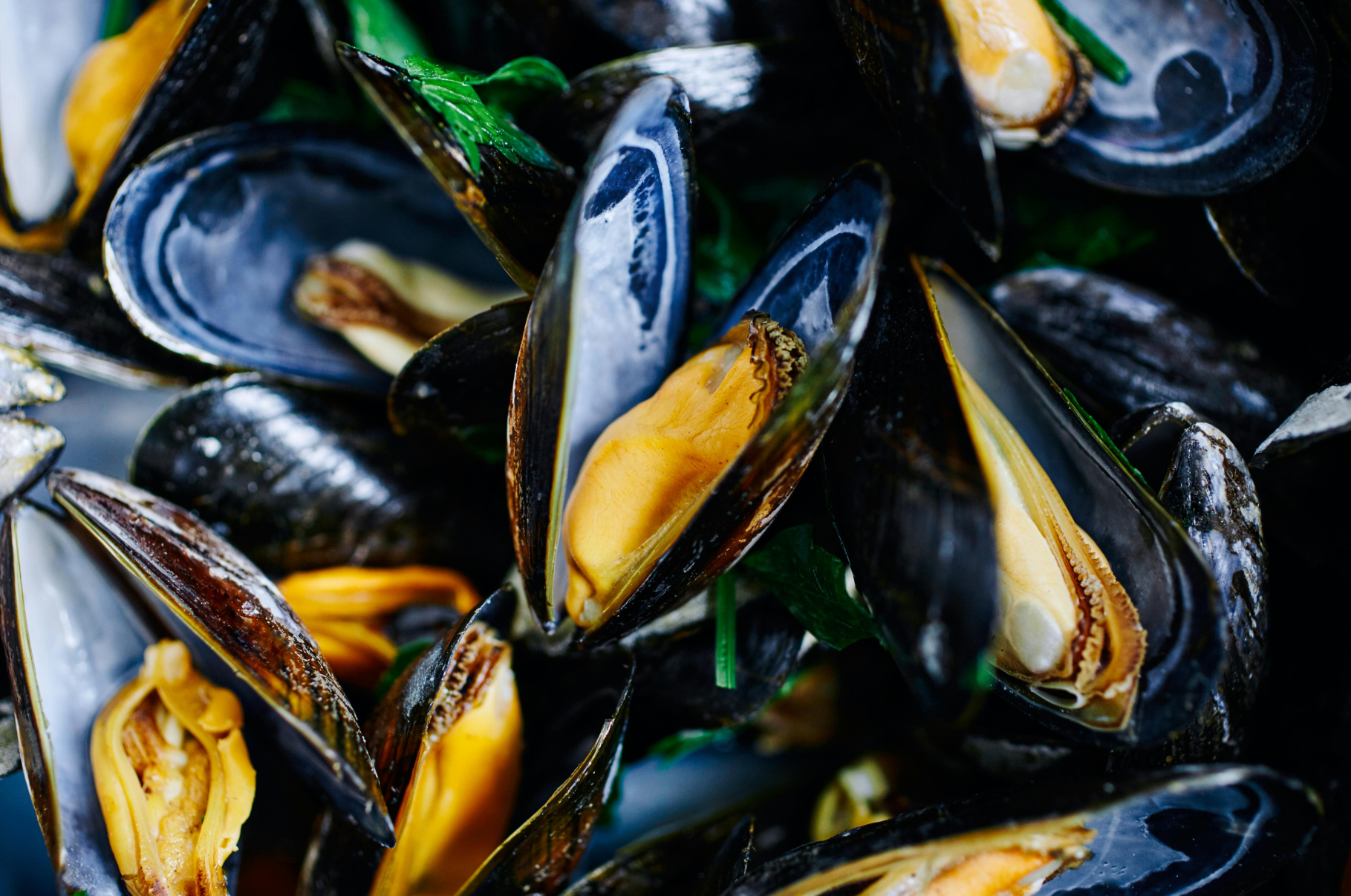
- October 12, 2025
Dear Chefs, this bistro-classic comes together in minutes: sweet mussels, a crisp white wine, and a silky butter emulsion you’ll...
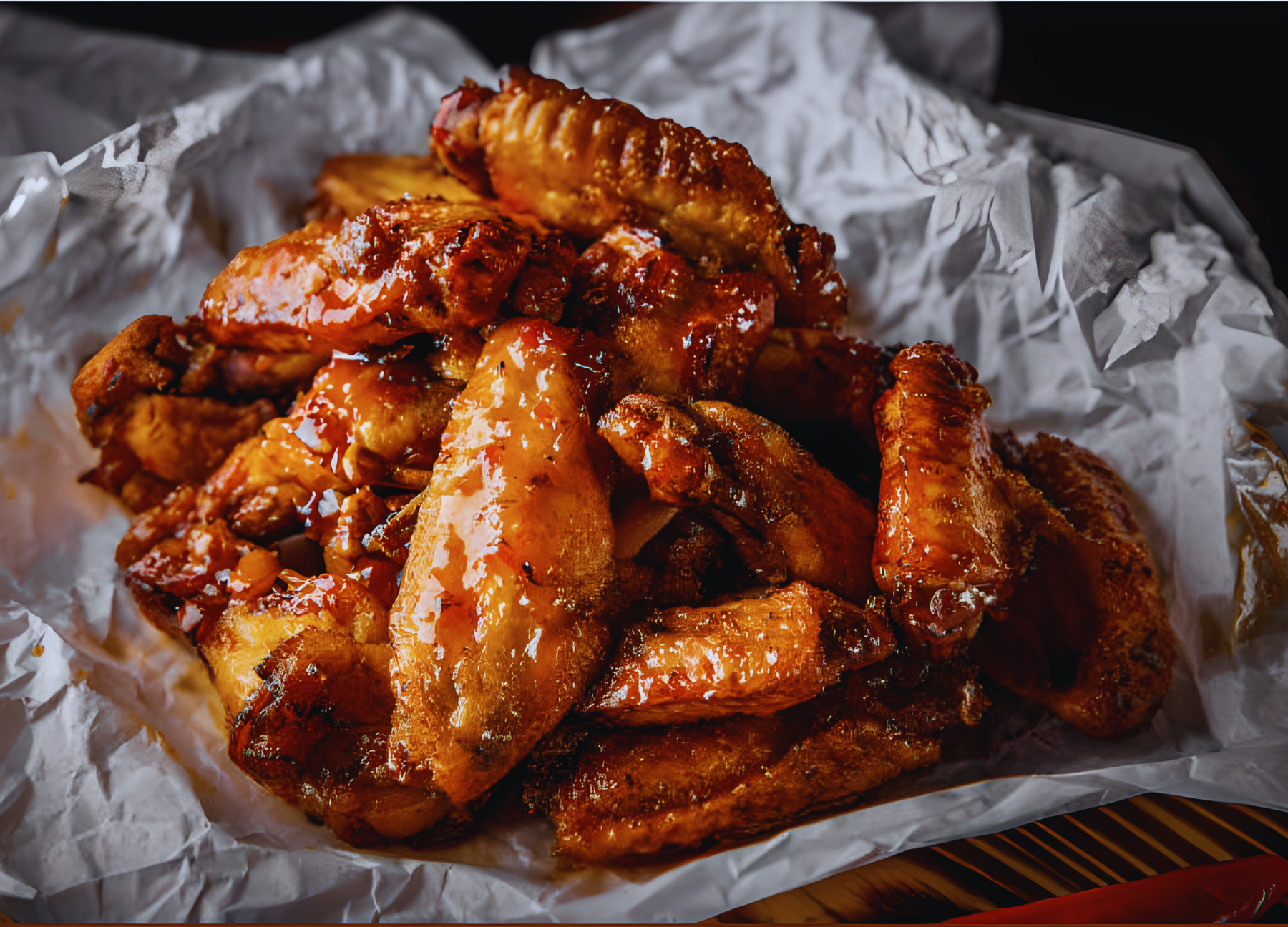
- September 16, 2025
Dear Chefs, there are few things as sacred as game day rituals: the jersey, the TV remote, and, of course,...

- September 11, 2025
Dear Chefs, some dishes don’t just feed the stomach—they hug the soul. Butter chicken is one of those dishes, rich...
- Choosing a selection results in a full page refresh.
- Opens in a new window.


